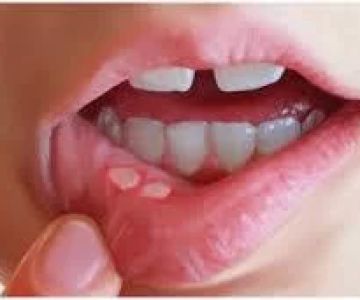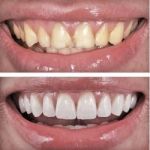Types of Oral Ulcers
There are various types of mouth sores and lesions. Canker sores are the most common, but there are also conditions like oral lichen planus, leukoplakia, erythroplakia, oral thrush, and in rare cases, oral cancer. Canker sores often result from minor trauma, acidic foods, or stress. Oral lichen planus is an immune system response and is more common in women over 50. Leukoplakia causes white or gray patches due to excess cell growth, often from smoking or chewing tobacco. Erythroplakia is another tobacco-related issue with red patches. Oral thrush is a fungal infection caused by an overgrowth of yeast, especially after antibiotic use or a weakened immune system. Oral cancer lesions can present as persistent mouth sores or ulcers.
Symptoms and Causes
Mouth ulcers typically appear as sores on the gums, tongue, inner cheeks, inner lips, or roof of the mouth. They are usually red around the edges and white, yellow, or gray in the center. You might have one or multiple ulcers. Other symptoms can include swelling around the ulcers, increased soreness when brushing teeth, and intensified pain when consuming spicy, salty, or sour foods. Causes of mouth ulcers range from minor tissue injury during dental work or accidentally biting the cheek or tongue, to allergic reactions, hormonal changes, stress, lack of sleep, vitamin deficiencies, viral, bacterial, or fungal infections, and underlying autoimmune diseases like Crohn's disease, celiac disease, reactive arthritis, lupus, or Behçet's disease.
Diagnosis and Tests
A healthcare provider can diagnose a mouth ulcer through a visual examination. In severe cases or when a specific health condition is suspected, blood tests might be ordered.
Management and Treatment
Most mouth sores heal on their own, but medications can be prescribed to alleviate discomfort. Common treatments include antiseptic gels or mouth rinses, steroid ointments, and immunosuppressants in severe cases. At home, you can relieve symptoms by drinking plenty of water, maintaining good oral hygiene, rinsing your mouth with warm saltwater, using a hydrogen peroxide and water mixture, avoiding hot and spicy foods, and applying over-the-counter topical anesthetics.
Prevention
While it's impossible to completely prevent mouth ulcers, you can reduce the risk by brushing and flossing regularly, using a soft-bristled toothbrush, eating a healthy diet, and visiting the dentist for regular checkups and cleanings. Treating underlying conditions can also prevent ulcers from recurring.
Outlook and Prognosis
In most cases, mouth ulcers go away on their own within 10 to 14 days. However, if a mouth sore persists for longer than three weeks, it's advisable to schedule an appointment with a healthcare provider, as it could indicate an underlying health issue.
Living With
You should contact your healthcare provider if you have mouth sores that last for three weeks or longer, new sores that appear before the old ones heal, ulcers that affect the outer part of your lips, pain that doesn't improve with medication, unusually large ulcers, painless sores, fever, or diarrhea. If you experience severe or frequent mouth ulcers, it's helpful to ask your provider questions such as the reason for recurrence, whether an underlying condition is causing them, how to reduce the risk, recommended medication, and necessary diet or lifestyle changes.
Common Questions
The difference between a mouth ulcer and a canker sore is that "mouth ulcer" is a broad term encompassing any sore in the mouth, while canker sores are the most common type. Canker sores can result from vitamin deficiencies but often occur without a known cause and may recur. They are different from cold sores, which form outside the mouth. A mouth ulcer that lasts longer than three weeks might indicate a more serious underlying condition. Mouth ulcers are usually harmless but persistent ones could be a sign of oral cancer, especially if they appear on or under the tongue.
Conclusion
Oral ulcers can be quite inconvenient, causing pain and affecting daily activities like eating and drinking. In most cases, they heal within two weeks without the need for specific treatment. However, if a mouth ulcer persists for more than three weeks or if you have frequent occurrences, it's essential to consult a healthcare provider. They can determine if there is an underlying condition and recommend appropriate treatment or lifestyle changes to prevent further issues. Understanding the types, causes, symptoms, and available treatments for oral ulcers can help you manage this common health concern more effectively and ensure a quicker recovery.




 Riverside Tooth Co.5.0 (276 review)
Riverside Tooth Co.5.0 (276 review) Knight Orthodontics4.0 (120 review)
Knight Orthodontics4.0 (120 review) Alan K Vance DDS5.0 (2 review)
Alan K Vance DDS5.0 (2 review) The Pediatric Dental Group Milford4.0 (655 review)
The Pediatric Dental Group Milford4.0 (655 review) Dentistry at 1818 Market Street4.0 (686 review)
Dentistry at 1818 Market Street4.0 (686 review) Dr. Mark Rashidi of Mission Viejo5.0 (11 review)
Dr. Mark Rashidi of Mission Viejo5.0 (11 review) The Importance of Oral Health Education During Pregnancy for a Healthy Pregnancy
The Importance of Oral Health Education During Pregnancy for a Healthy Pregnancy Best Tips for Brushing Your Teeth Properly for Healthy Gums: Essential Techniques for Oral Health
Best Tips for Brushing Your Teeth Properly for Healthy Gums: Essential Techniques for Oral Health Why Skipping Dental Checkups Can Lead to Bigger Oral Health Problems
Why Skipping Dental Checkups Can Lead to Bigger Oral Health Problems Advantages of Porcelain Dental Restorations
Advantages of Porcelain Dental Restorations How Can Diabetes Cause Tooth and Gum Problems? Preventing and Managing Oral Health Issues
How Can Diabetes Cause Tooth and Gum Problems? Preventing and Managing Oral Health Issues Healthy Habits for Promoting Good Oral Health and Hygiene: Tips for a Healthy Smile
Healthy Habits for Promoting Good Oral Health and Hygiene: Tips for a Healthy Smile